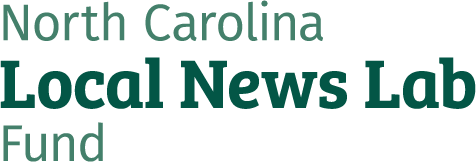From an initial seed grant to a three-year investment, here’s how funding the Border Belt Reporting Center is building out a model of reliable journalism in rural communities
Border Belt Independent
We know that a robust, thriving local news and information ecosystem leads to more civic engagement, stronger public health, and a clearer understanding of problems and potential solutions. But in many areas of North Carolina, it has become increasingly difficult to find reliable, trustworthy local news focused on the municipal or county level. Bladen, Columbus, Robeson, and Scotland counties clustered along the state’s border with South Carolina have only a handful of reporters to cover a broad, diverse geography. Eastern North Carolina, including this interior group of counties, has experienced high levels of poverty, negative health outcomes, and a stark lack of broadband access.
In 2019, third-generation newspaperman and then-publisher of The News Reporter Les High started exploring how to fill the information gap that’s grown in the Border Belt communities with sharable reporting. The Fund provided an initial seed grant to assess the viability of a collaborative non-profit effort.
Launched in May 2021, the Border Belt Independent was bolstered by an initial seed grant from the North Carolina Local News Lab Fund, which led to a three-year grant from the Kate B. Reynolds Charitable Trust. The nonprofit, online newsroom reports on issues and challenges facing the Border Belt, with a focus on poverty, health, mental health, adverse childhood experiences, race, education, and the economy. Since its inception, the Border Belt Independent has helped readers clearly understand the issues at hand, such as school board transparency and state redistricting, while also reporting on solutions that can address the challenges. And through localizing coverage of national stories, the Border Belt Independent’s reporters ensure audiences know how issues like the Omicron surge and the opioid crisis are impacting their communities. The newsroom has also prioritized relationally informed coverage of the Lumbee Tribe, which has been fighting for federal recognition for more than a century.The Border Belt Independent’s emphasis on equitable coverage and accountability has offered the people of Eastern North Carolina more reporting that puts them at the center of the conversation.
The Border Belt Independent is testing a model to support reliable journalism in rural counties. The learnings from the Border Belt Independent’s operations will be critical to helping other rural areas replicate structures that offer in-depth reporting to every county in North Carolina.









